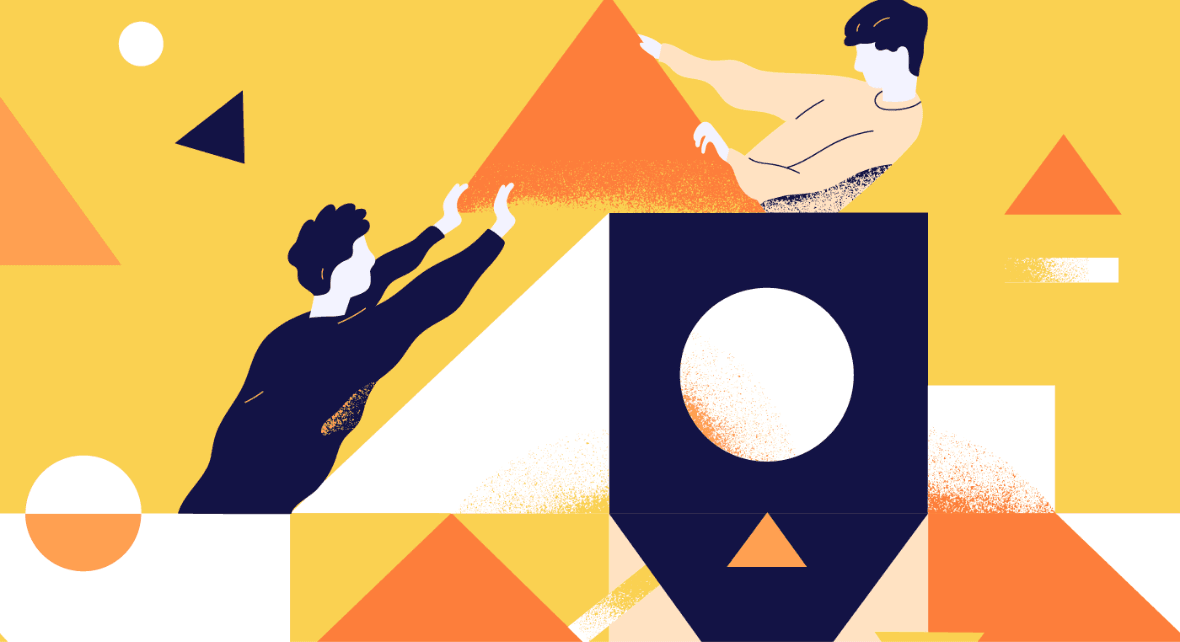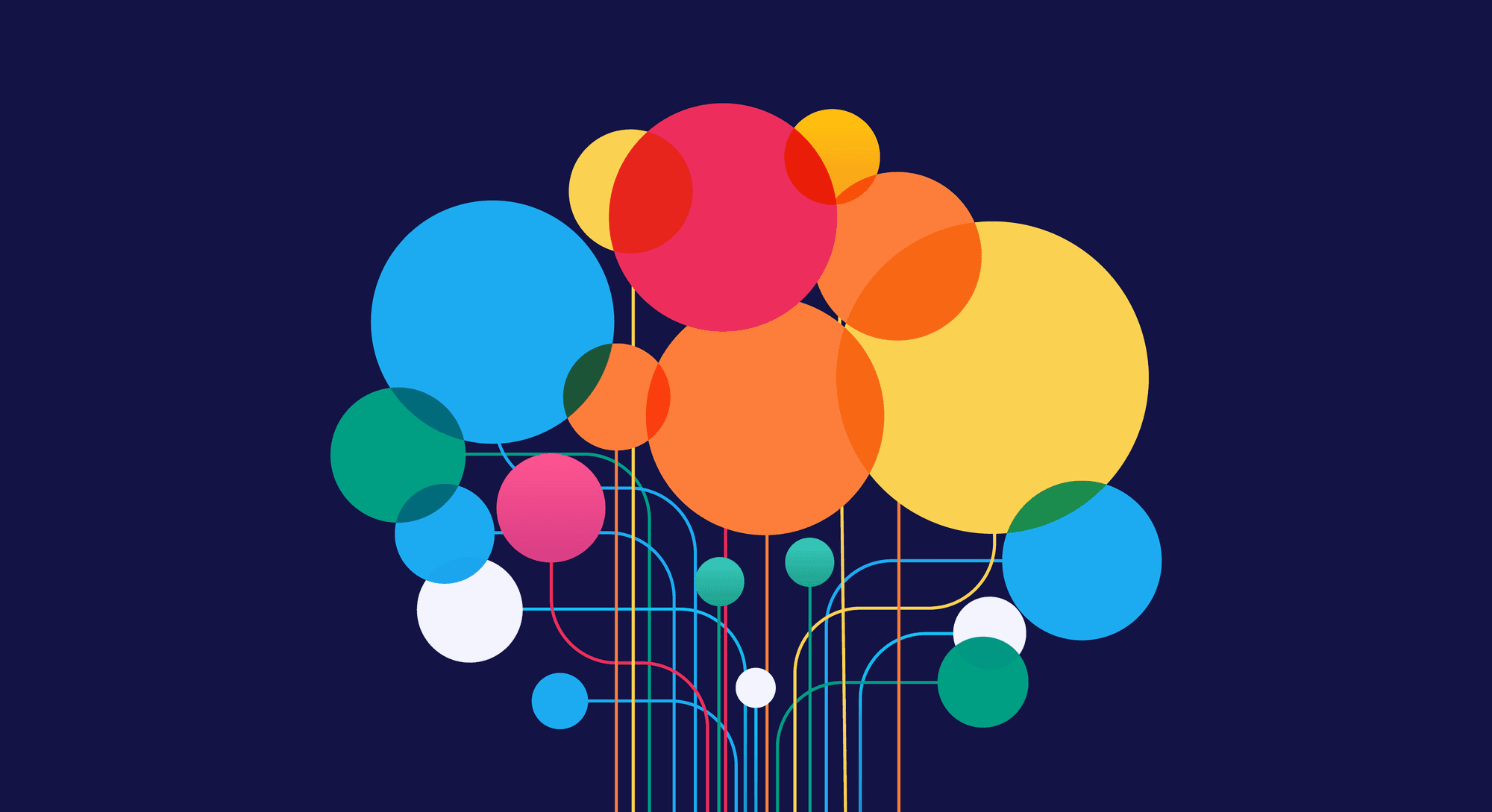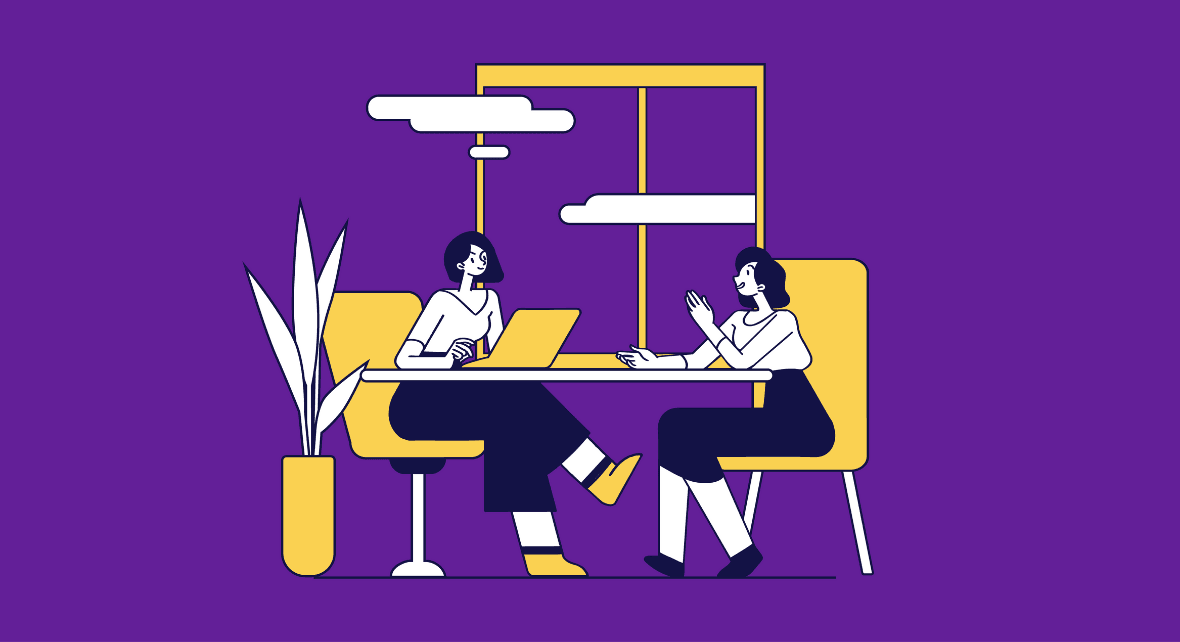The products we develop always face challenges and problems, and companies rely on UX designers to solve them. But is it really that easy to acknowledge the right problem?
The truth is that problem investigation is a crucial step in UX. So don't underestimate the process, and allocate your resources wisely. Nobody wants to spend time (and money) working on the wrong problem that won't solve user needs.
This article will approach essential techniques to help you formulate the real problems that will guide the rest of your projects. Shall we start?
What is a problem in UX Design?
UX Design is about solving people's problems and providing them with a great experience.
Some people might think that all it takes is to conduct quick research and ask users straight away about the issue they need to solve.
But that's not how things go.
Usually, conversations about a challenge in UX Design are related to a user's pain or something they need or even desire. But most of the time, people are not even consciously aware of what they have to solve, what they are genuinely struggling with.
There's a famous quote attributed to Henry Ford that says:
"If I had asked people what they wanted, they would have said faster horses."
This quote is a great way to illustrate how we should always dig problems a bit further and see through the answers that users give us — if we want to get to the root of a problem.
That way, a fundamental aspect of problems in UX is that it represents something more abstract, like an unconscious desire.
Let's take the Ford example. What did people really want? They wanted to go faster from point A to B; horses were not even part of the equation.
Notice that if there's an innovation, it is because someone looked deeper into an existing challenge or situation. The best solutions for us are usually something nobody saw it coming.
But that's not possible if we jump to conclusions or problems right away.
Understand that user research is fundamental, but the root of a problem is usually not listed in their answers. So it's a designer's job to dig deeper.
Why is problem investigation so important in UX Design?
Every UX project should have an issue as a starting point, whether you're developing something from scratch or improving an existing product.
In practical terms, it is not wise to spend time and money developing a product that won't add value to the user, that won't fulfill a desire, or solve a problem they have.
So establishing a well-defined problem is crucial to give a project the direction it needs so that the outcome can meet users' needs.
Problem statement
In the discovery phase of a design process, designers use a Problem Statement to frame the problem and communicate the findings.
According to Nielsen Norman Group, a Problem statement is a "concise description of the problem that needs to be solved."
The method might sound obvious; a challenge should be investigated and then explained in a straightforward statement. But the process behind it brings relevant benefits to any project you're working on; take a look:
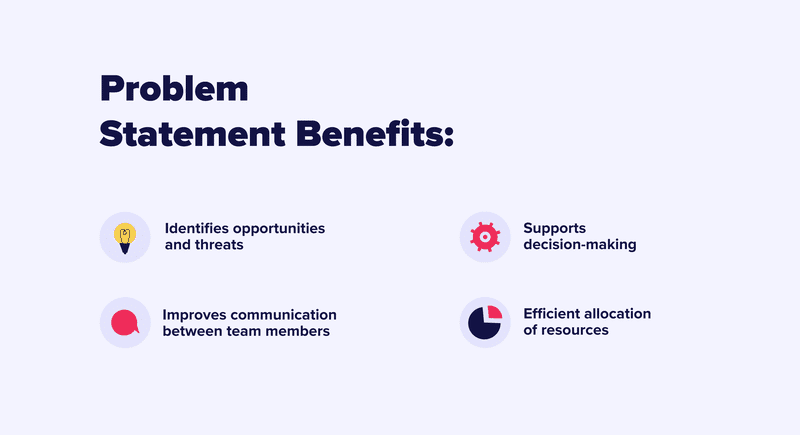
- Identifies opportunities and threats: when the problem is clear, it becomes easier for the team to know what to do and what to avoid;
- Improves communication between team members: a well-defined problem leaves no room for ambiguity, improves communication between teams, and promotes teamwork, as everyone pursues the same goal;
- Supports decision-making: a well-established problem helps guide design decisions so that any idea that is out-of-context can be left aside;
- Efficient allocation of resources: investing time and effort into the wrong problem results in rework and time waste, which usually leads to employee demotivation.
Therefore, always try to define a Problem Statement with your team. Remember that the data and information collected in the research methods must be translated into insights so that you can identify and determine the real issue to be solved.
Reading tip: Double Diamond To Help Define What The Real Problem Is
How to define your problem statement?
This section will cover some tools and methods to help you define and state the problem.
First of all, there are a few things to reflect on the challenge:
- Context: what is causing the problem?
- Business: how is the problem affecting the company?
- User-centric: was the problem identified from users' needs? Who are they (demographic, persona, motivation, reason for being in the situation)?
- Manageable: if the problem is too broad, it will be difficult to manage it.
It's also crucial to understand what the problem isn't about:
- Compilation of problems: you should look for one problem statement. Usually, one problem leads to further ones. Please keep it simple, find the source, and don't add unrelated issues to your statement.
- Solutions: when defining a challenge, don't worry about solutions yet;
- Lack of conciseness: Be brief and concise so that everyone quickly understands the problem.
With these factors in mind, let's see some techniques to help you identify and define your problem statement.
5 Ws technique
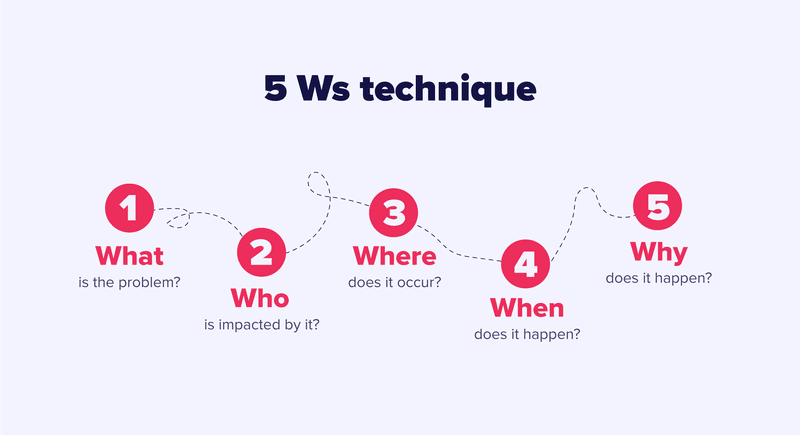
The 5 Ws technique helps identify the context behind user needs. The concept proposes to answer some key questions:
- What is the problem?
- Who is impacted by it?
- Where does it occur?
- When does it happen?
- Why does it happen?
The answers to the above questions will support describing the Problem Statement concisely, adding depth to the root problem.
Point of View (POV)
The Point of View technique is commonly used in Design Thinking processes during the Ideation stage.
A good POV helps solve design challenges in a goal-oriented tone and should be based on a deeper understanding of users, their needs, and the design team's meaningful insights about them.
To apply this method, the Interaction Design Foundation lists four main steps:
1) Define the specific user
The first step is to analyze the information collected during the research stage and define which persona is impacted by the problem: the specific users of your product.
Then select the most critical needs that must be met, always based on the knowledge gathered from the research step.
Finally, gather insights that help contextualize the needs.
Remember: the insights shouldn't explain user needs but act as a speck of light toward your design solution.
2) Write down your definitions
You can use a template like this:
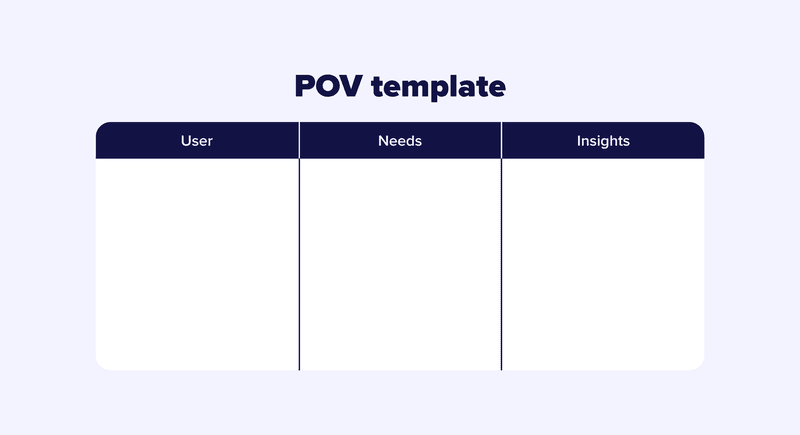
In the template above, we can complete the information with the following example:
- User: Working adults living in big cities with children;
- Needs: Prepare quick and healthy meals for the family;
- Insight: Users have little time to prepare meals due to their work and day-to-day activities. He would like to have a healthy and tasty meal option to prepare quickly for himself and his family, but he is tired of the same frozen food options at the supermarket.
3) POV Madlib
Now it's time to create your Point of View and define an actionable Problem Statement to guide your design project.
The POV Madlib template is an affirmative sentence in which you fill out who the user is, what they need, and the insights you have.
If we take the example from the previous step, the sentence will look like this:
Working adults living in big cities with children [user] need faster and healthy meals [need] because they are in a hurry and would like better options than the ones they find at the supermarket, like frozen food [insight].
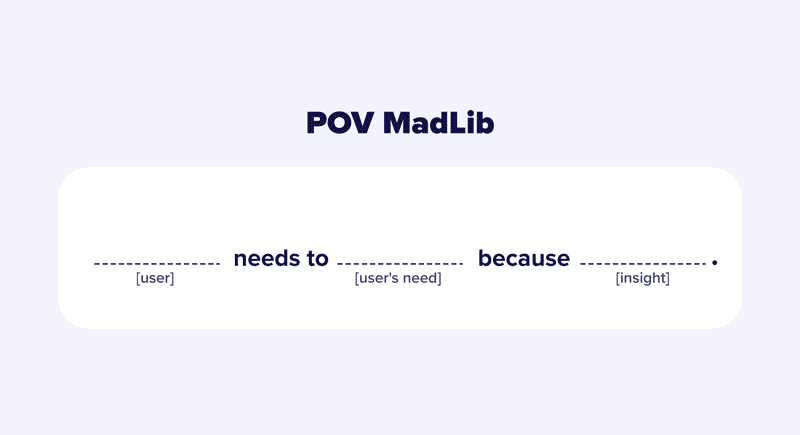
4) Revise
Last but not least, revise and make sure your POV outcome has the following:
- Has a narrow focus;
- A clear, actionable Problem Statement;
- Can guide innovation efforts;
- Informs criteria for evaluating competing ideas;
- Inspirational, keeping the team motivated.
From the POV, you can start working on the following stages of the Design Thinking process, which will embrace the solutions and creation of prototypes.
Keep in mind that when you are working on discovering the real problem, the focus is not on solutions.
Abstraction Laddering
It's common to see people focusing on the symptoms of the problem rather than the actual source. So let's keep you on the right path to solutions with another technique to reframe the problem: laddering.
The Abstraction Laddering technique can provide abstract and tangible statements, starting from a meaningful need.
- Write down the problem;
- Ask why: "why do we have to solve this?" (abstraction) and write your answer;
- Reframe the problem as a challenge, asking: "how might we solve this?" (actionable);
- Iterate by asking "why else" and repeat until you run out of problems/answers.
Each question encourages you to look at the problem differently, either abstractly or more concretely. This way, you can reframe the Problem Statement by diving deeper into its reasons.
Let's use as an example the quote from Henry Ford:
- Need/Initial Problem: We need faster horses.
- Why?
- Because people want to get from one place to another quickly.
- How?
- We can create faster transport modes that don't rely on horses.
Use Abstraction Laddering whenever you want to look further into the problem and verify if it is really the root cause behind users' needs or dissatisfaction with a product.
Take the time to define problems
Don't jump to conclusions too fast after a User Research. As much as the information collected may seem to point towards a problem, please don't assume it's the only path to go. We can often focus on the wrong problem precisely by not investing a little more time investigating it in depth.
Therefore, never underestimate the problem definition step in UX Design. Investing time and effort in this process can avoid massive damage to your project.



